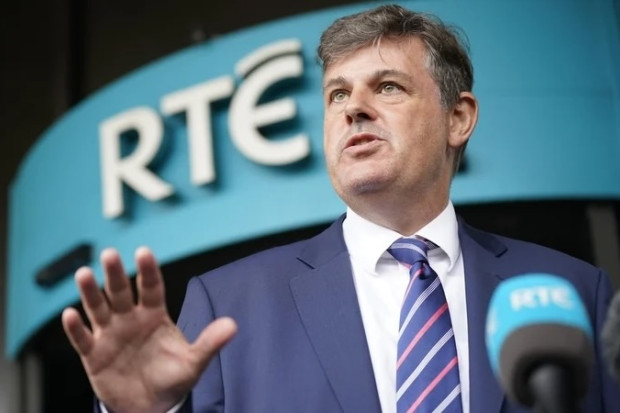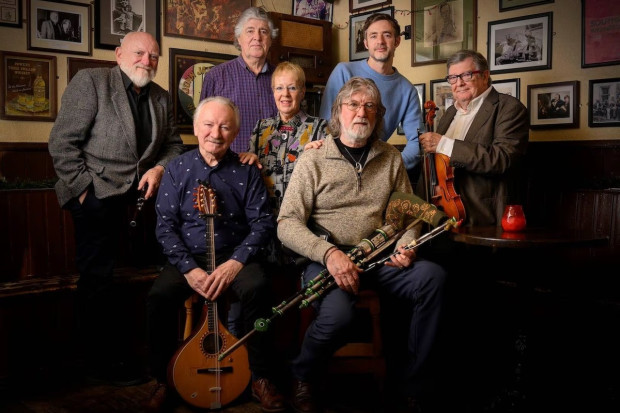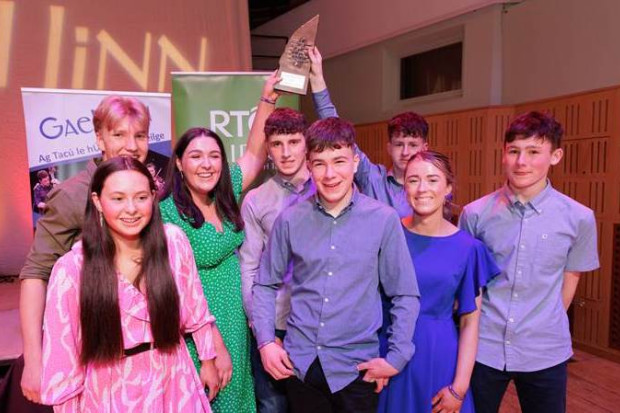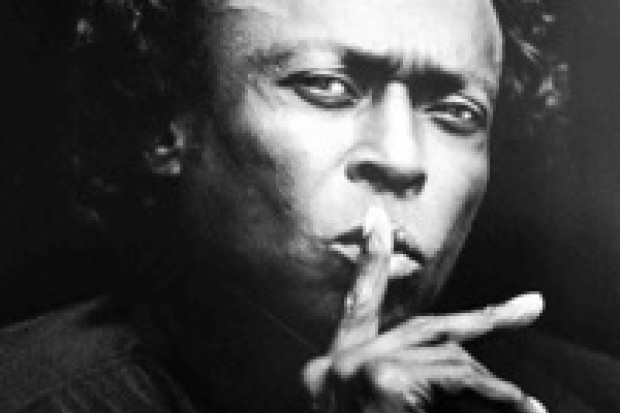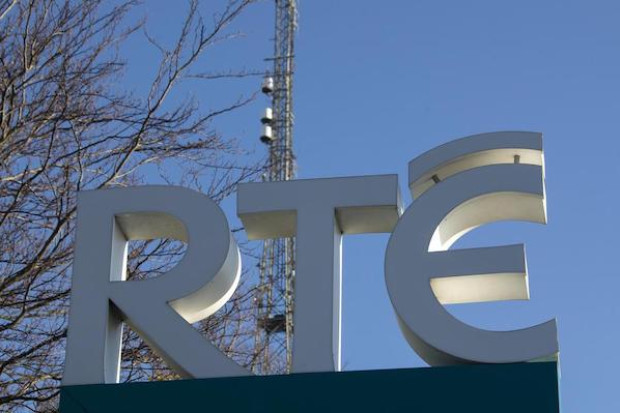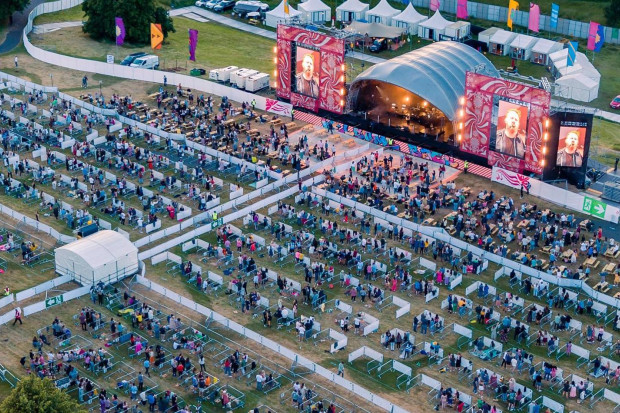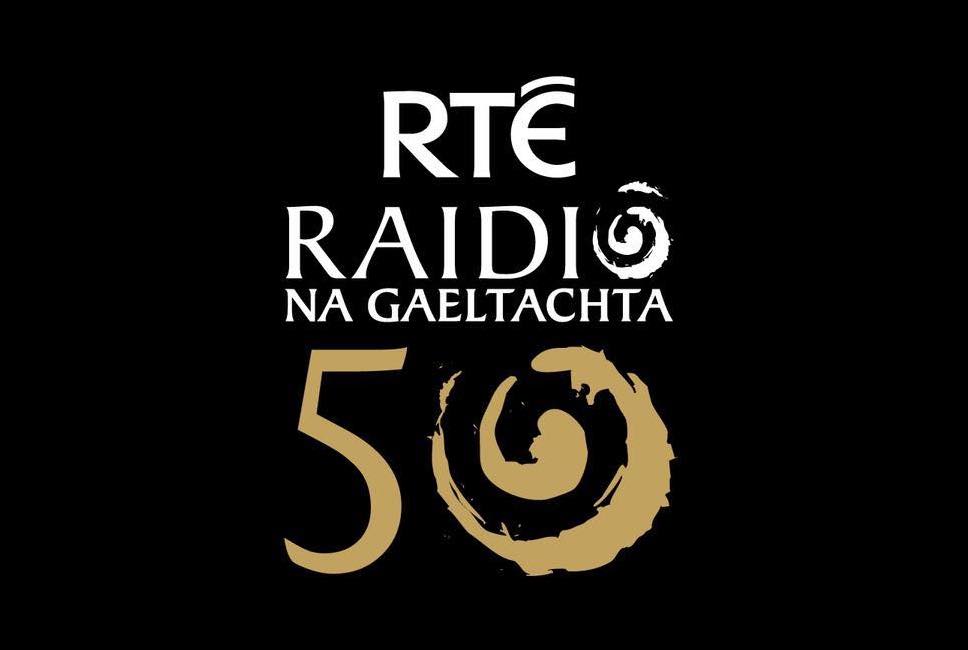
Raidió na 'Fuddy-Duddies'?
I don’t think I would be able to speak Irish were it not for RTÉ Raidió na Gaeltachta, which celebrated 50 years of broadcasting on 2 April. Many people who go to English-language schools are let down by the way Irish is taught and come out with a basic or poor grasp of the language. When I decided to address this gnawing weakness, I used to listen to RnaG while working in my first post-college job – the kitchen of a pizza restaurant in Dublin. At first, I could get lost in the range of dialects and the fluency of the presenters, but slowly I began to find the shows that I could follow, and, with some classes and reading the weekly newspaper Foinse, my understanding grew. When I moved to Conamara, I found I almost had to relearn the language; learned and spoken Irish are two different things. I can recall, however, a breakthrough moment when I was listening to a conversation on RnaG and suddenly realised I wasn’t thinking about the language anymore. My Irish is now good, not fluent, because fluency would mean I could express everything I think and feel through the language, but I am comfortable enough to use it every day. Once you learn Irish, it is like putting on a special headset, whereby everything is now multi-dimensional. You hear and see the language everywhere, you think in terms of both languages, and you are part of a very connected community.
While it is a great aid to learners, Raidió na Gaeltachta’s most important role is in the community, most centrally in the Gaeltacht. Almost every child and adult there will find themselves being broadcast on it at some stage, either being interviewed, playing music, singing with their school, being part of a play, performing a lúibín or an agallamh beirte, or simply chatting to a host about a local issue. The station also has a comprehensive news and sport service that covers everything happening locally, nationally and internationally. For fifty years, the station has been at the heart of Gaeltacht life, and it is difficult to imagine the richness that we do have in the language without it.
It has also had a major impact on music. RnaG broadcasts more Irish traditional music and song than any other station, and this has not only been mutually beneficial during the rise of Irish folk over the past fifty years, but it is also easy to imagine that sean-nós singing would have almost faded away by now were it not for the support of a national station. RnaG has championed this art form relentlessly, playing recordings of singers throughout the day and broadcasting the annual Oireachtas sean-nós competitions.
But while we should celebrate what we have in RnaG, we also know that it does not cater to the full range of interests of Irish speakers, either within the Gaeltacht or outside of it. In a way, the image of the Gaeltacht that RnaG presents is rather partial. It has thrown its lot in almost entirely with traditional music, and country music, but clearly not everyone in the Gaeltacht is interested in those musics, and even those who do enjoy them have interests well beyond. In fact, for most Irish-speaking young people in their teens and twenties, RnaG soon becomes irrelevant to their musical interests. The music they love is on Spotify, TikTok, Instagram, YouTube, 2FM and SpinSouthWest.
It has, of course, always been that way; I can remember my own father and sister battling over the kitchen radio, him switching off 2FM for RnaG, her turning it back on again. Young people don’t need RnaG, but the Irish language and the Gaeltacht needs them. And as Raidió na Gaeltachta celebrates five decades, it’s important to point out that RTÉ actually promised another national Irish-language radio station seven years ago.
A flagship idea
In its Irish-language action plan in 2015, Meáin Ghaeilge RTÉ 2015–19, which received plenty of attention at the time, RTÉ stated one of its ‘key actions’ would be the establishment of a ‘youth-orientated Irish-language radio station’. It would do this through ‘leveraging RTÉ RnaG’s national transmission structure and RTÉ 2FM’s contemporary music expertise’. It was one of the flagship ideas in the plan.
An Irish-language youth radio station – or, more specifically in the digital age, a multi-faceted platform of which FM radio would be a key part – means a separate entity to RnaG playing mainstream and alternative pop, rock and hip hop in English and Irish, with Irish-speaking presenters. It would be a positive step forward for Irish-language media, for it can’t stand still. TG4 has already announced that it is establishing a children’s channel. A new youth and music station for the Gaeltacht and for Irish speakers, essentially a second national Irish-language radio service, would fill a big obvious gap in our contemporary lives. It would also be inspirational for contemporary songwriting in Irish.
The idea of a pop station as Gaeilge did not come out of nowhere. In 2005, Seachtain na Gaeilge started releasing albums of well-known bands singing versions of their songs in Irish. The Walls, Nina Hynes, Paddy Casey, The Devlins, Mundy, The Frames and more – SnaG, as the album was called, was a great record in any language. The same year, RnaG introduced Anocht FM after 9pm, when English-language song lyrics would be permitted, an attempt to attract a younger audience. This initiative has seriously faltered since, with a limited range of programmes and little investment. A couple of years later, the comedian Des Bishop showed what was possible with hip hop when he performed his Irish-language version of ‘Jump Around’ (‘Léim Thart’) on his television series In the Name of the Fada. Then Oireachtas na Gaeilge held a seminar on the topic of a youth station and Seachtain na Gaeilge started the digital chart-station Raidió Rí Rá a few months later, and continued to release albums of Irish-language rock and pop every year. Bands such as Kíla and Rís have also been releasing great original Irish-language songs for years – Kíla’s Tog É go Bog É (1997) and Rís’ Heileo Campello (2003) are important recordings in modern Irish-language songwriting. But it was Mícheál Ó Foighil and his team at Coláiste Lurgan, the Irish-language college in Indreabhán in Conamara, that lit up the country in the summer of 2013 with an inspired version of Avicii’s ‘Wake Me Up’ and ‘Amhrán na gCupán’ followed by many more Irish-language versions of pop songs with fresh, creative videos. Coláiste Lurgan demonstrated without doubt that popular music could be a huge boost to Irish and the Gaeltacht. The band Seo Linn emerged out of the college, and TG4 developed the format into a television programme called Lurgan 2k19. RnaG also gave Raidió Rí Rá a one-hour slot as part of Anocht FM. At the same time, the Belfast group Kneecap, who rap in Irish, began attracting audiences across Ireland and Great Britain. Their song ‘C.E.A.R.T.A.’ was particularly popular among Conamara teenagers in the summer just before the pandemic.
So when RTÉ’s Irish-language strategy came around in 2015, and the youth pop station was proposed, it was an idea whose time had come. Momentum had been building for years, and Coláiste Lurgan, along with all the other initiatives, had proved that there was a demand for popular music through Irish.
So what happened? The idea just faded into the background. It hasn’t appeared in any subsequent RTÉ strategy. Last week, RTÉ told the Journal of Music that it has ‘no plans’ to develop such a station. We might think that this relates to RTÉ’s financial problems, but they were already mentioned and taken into account in the 2015 document. We have to ask: do these strategies and action plans mean anything? In a recent Irish Times article on RnaG, it was noted that it took 46 years between the initial idea for a Gaeltacht radio station and the actual setting up of the initiative in 1972. Are we making the same mistake of delayed action with an Irish-language youth station?
The only recent public reference to the idea appears in the submission of Raidió Rí Rá to the Future of Media Commission. The station made the case for going national, but over eighteen months after the Commission was established, Minister Catherine Martin has still not made its recommendations public.
Irish-language radio for a new generation
The question that some might ask is this: is radio even relevant anymore to a generation who finds their music on streaming platforms and social media? But imagine a well-resourced national station in Irish, broadcasting 24 hours a day and seven days a week on FM and online, with young talented presenters who really know their music and have excellent Irish, playing a broad range of mainstream and alternative music from rock, pop and hip hop (a mix of the best approaches of 2FM and BBC 1, 2 and 6), hosting events around the country, feeding their work into Tik Tok, Instagram and Twitter as 2FM and BBC Radio 1 do, issuing podcasts and playlists via Spotify, running music competitions, showcasing young bands and singer-songwriters, interviewing international stars bilingually as they do on TG4, having videos on YouTube as a key part of what they do, and connecting in with schools and colleges around the country. Does that not sound like an attractive proposition for any audience? The important point is that it can’t be done as a half measure, as has been the case so far. An Irish-language pop station needs to meet teenagers and twenty-somethings where they are. The last few years have seen the global rise of popular Irish bands such as Fontaines D.C. and Pillow Queens, and artists such as Hozier and Dermot Kennedy. If RTÉ had established the station when they said they would (by 2019), it would be riding this wave, as 2FM is. It’s essential not to let the moment pass.
Last Saturday, RnaG held a 50th anniversary live broadcast celebration in Telegael’s studios in An Tulach in Conamara, with a range of great traditional music and singers backed by the RTÉ Concert Orchestra. The occasion was wonderful in many ways, but it was clear that this was a station for an older listenership. I think there was only one person under 30 in the audience. The only piece of pop music that was sung, ‘An Dreoilín’, was written over 25 years ago. RnaG is promising the return of its song competition Réalt this year, but it is too little too late. At one stage, the singer and fiddle-player Mairéad Ní Mhaonaigh from Altan made the point that the future of the Irish language is young people, not ‘fuddy-duddies’, and she pointed to the wonderful young musicians of Ceoltóirí Chois Fharraige from Conamara and An Crann Óg in Donegal who had just performed. ‘Is iad sin is tabhachtaí,’ [they are the most important] she said. It is true. They are. So isn’t it about time we started reflecting the full range of their contemporary lives?
Published on 5 April 2022
Toner Quinn is Editor of the Journal of Music. His new book, What Ireland Can Teach the World About Music, is available here. Toner will be giving a lecture exploring some of the ideas in the book on Saturday 11 May 2024 at 3pm at Farmleigh House in Dublin. For booking, visit https://bit.ly/3x2yCL8.












